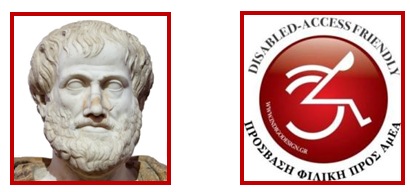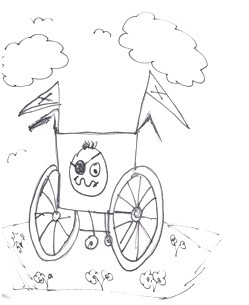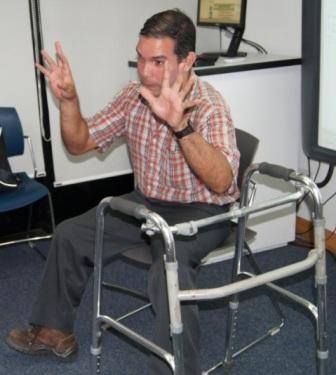
“Educating the mind without educating the heart is no education at all.”
Katie Quartano, Greece
Katie Quartano works at the Aristotle University of Thessaloniki, is a qualified teacher of EFL and has worked as an EFL oral examiner for many years. She is a founding member of the Disabled Access Friendly campaign, which won the 2014 ELTons award in the field of innovation in teacher resources.
E-mail: disabledaccessfriendlycampaign@gmail.com, www.disabled-accessfriendly.com

Menu
Introduction
Social and emotional learning
Lesson plan competition
Winning entries
Conclusion
Aristotle said this in about 350 BC. Today people talk about the benefits of Social and Emotional Learning (SEL) within the educational system. This is more or less the same thing that Aristotle was talking about. At the Disabled Access Friendly campaign, we talk about it too. One of our flagship quotations is “Teaching children to count is fine, but teaching them what counts is best”.
Social and Emotional Learning is a process for learning life skills, including how to deal with oneself and how to deal with others. In dealing with oneself, SEL helps in recognizing our emotions and learning how to manage those feelings. In dealing with others, SEL helps with developing sympathy and empathy for others, and creating and maintaining positive relationships. SEL also focuses on dealing with situations in a constructive and ethical manner.
With this in mind there is surely space for a new kind of teaching material in the EFL classroom. Material that is less focused on measurable academic outcomes and more focused on values, on educating the whole child. Of course the academics are important, but we believe that social and emotional skills are equally important. Think of the students you've had that you've been the most proud of. Are they the ones with the highest grades or the ones with outstanding character?
When Disabled Access Friendly launched its writing competition in cooperation with ELT Teacher 2 Writer and Burlington Books, what we were looking for in our winners was material that was in line with SEL. We wanted material that does something more than just provide the means to teach or practise aspects of English as a foreign language. We wanted material that would at the same time encourage learners to take responsibility, think and question what they see and hear, that would open their eyes to issues they had perhaps not considered before, that would provide information that could build pathways to understanding, caring and action. We wanted learners to come out of the classroom feeling uplifted in terms of their own social and emotional education. In line with the goals of our campaign, the issues in question are those related to people with reduced mobility, for example wheelchair users.
The competition received entries from as far afield as Venezuela. Several were shortlisted and these and the winning entries are available for teachers to download for free from our website and use in their classrooms. The winning entries were the following.
Level: A2
Age: Young learners
Title: Max’s wheels
Author: Catherine Zgouras

The protagonist of this simple and entertaining story is Max, whose wheelchair holds some surprises that young children will love! The story introduces ideas about inclusion, bullying and what to do if you are bullied. The text is broken up into manageable sizes. Learners draw illustrations of what they have just read, and are prompted to think critically about feelings and the consequences of good and bad behaviour.
Level: B2
Age: Teenagers, adults
Title: It’s just a different pace!
Author: Miguel Mendoza

Which do you think is the most difficult barrier a person with mobility disability has to face? We meet Ramon from Venezuela, who “walks with a different beat”. He says the most difficult barrier he faces is not a lack of ramps or suitable pavements, but people and their attitudes. Learners complete exercises using verbs related to different ways of walking and having read about wheelchair etiquette reflect on their own behavior towards people with a mobility disability. Teacher’s notes and an answer key are provided.
Level: B1
Age: Adults
Title: Choosing a WAV (Wheelchair accessible vehicle)
Author: Kate Baade

Have you ever thought about wheelchair accessible vehicles (WAVs)? In this lesson learners think about how a standard car could be converted to make it more accessible for a wheelchair user. They watch a video clip and compare the features of two different wheelchair accessible vehicles and describe the benefits of their various features. This leads on to an exercise providing practice in how to make recommendations by talking about different features and benefits. Learners then work in pairs for a role play, which is a discussion between a WAV salesman and a customer. Teacher’s notes and an answer key are provided.
We have over 130 lesson plans for free download on our site. By using this material in your classroom you are joining colleagues from all over the world who are embracing social and emotional learning, raising awareness about mobility disability and making a difference.
www.disabled-accessfriendly.com

Please check the Creative Methodology for the Classroom course at Pilgrims website.
Please check the Building Positive Group Dynamics course at Pilgrims website.
Please check the Making Thinking Visible course at Pilgrims website.


|